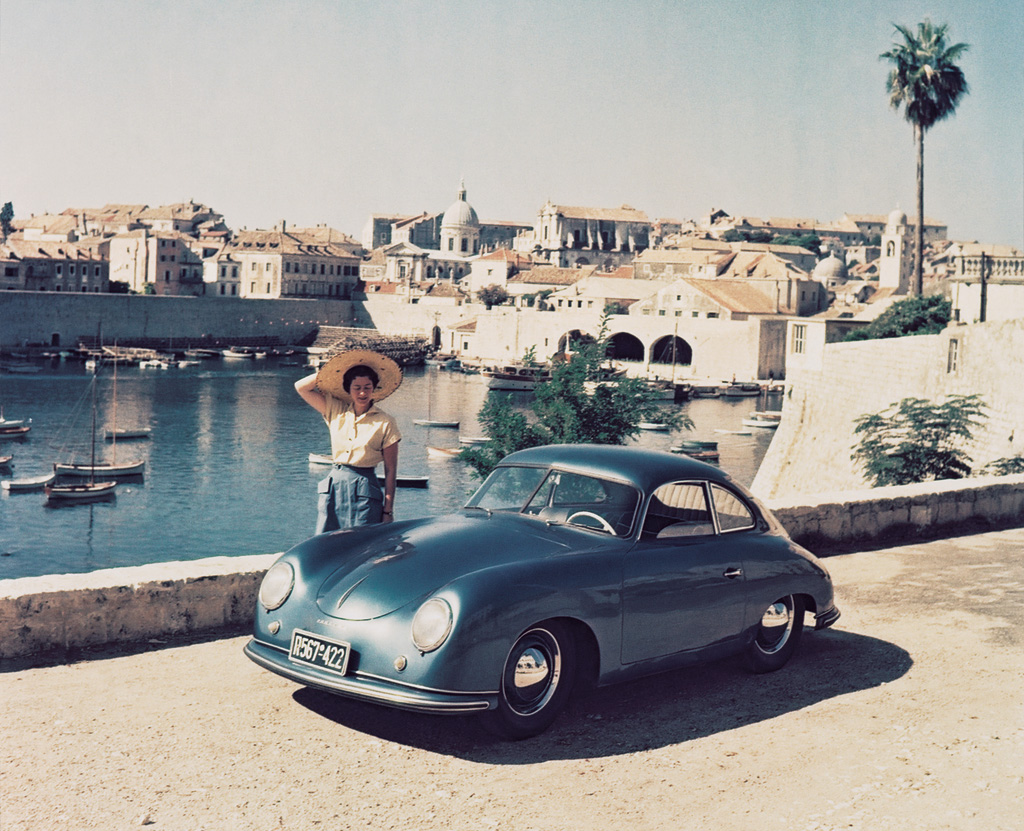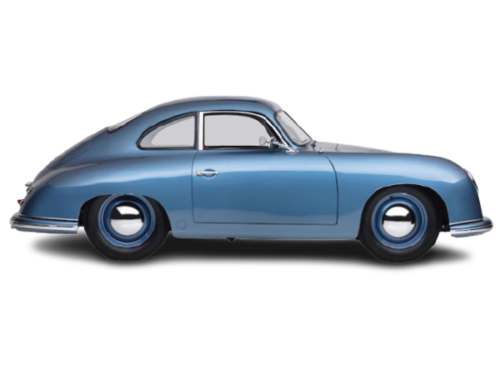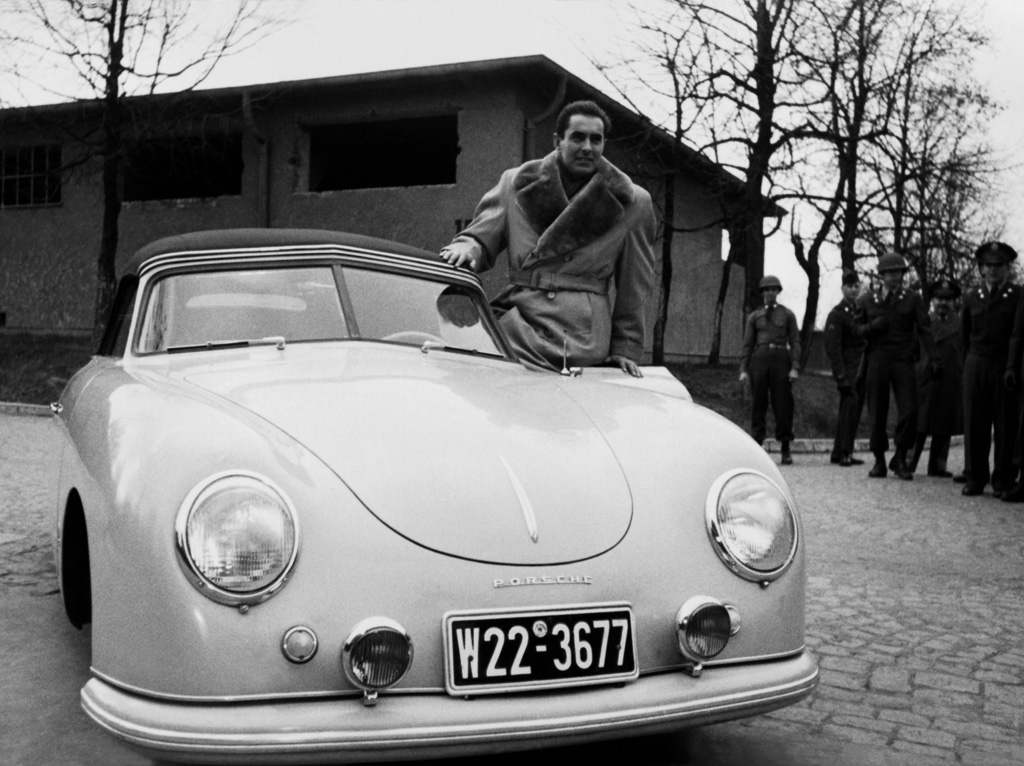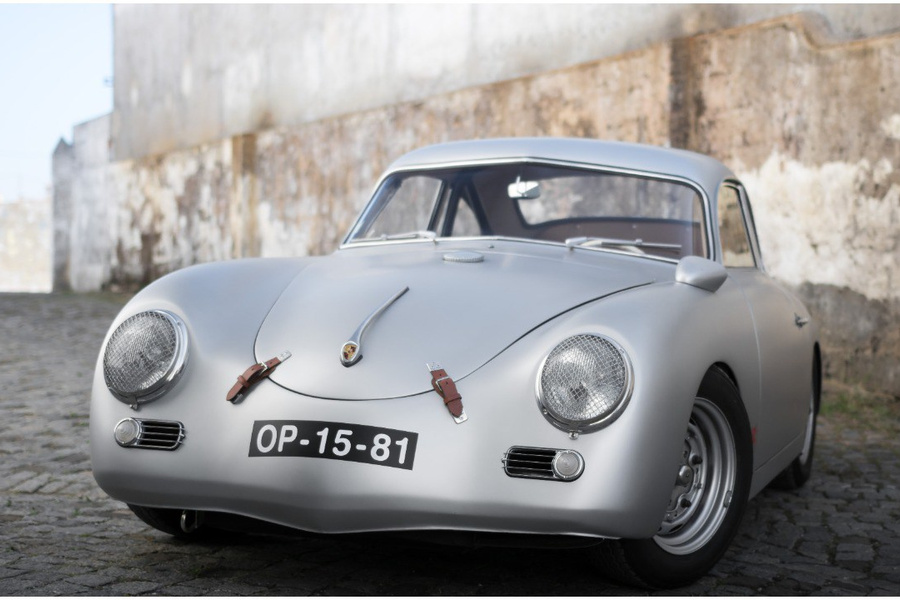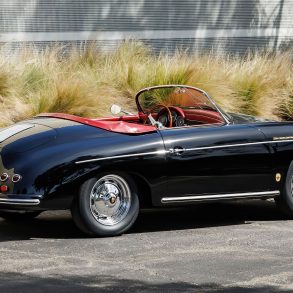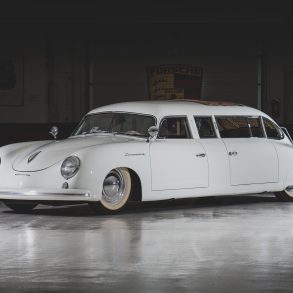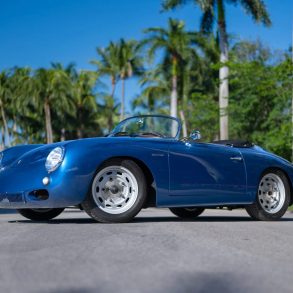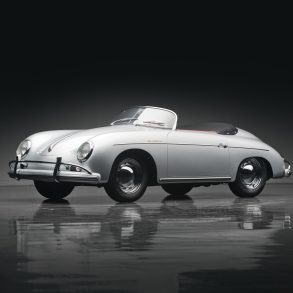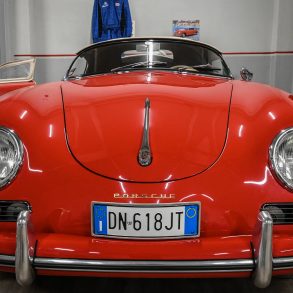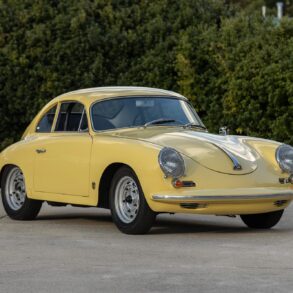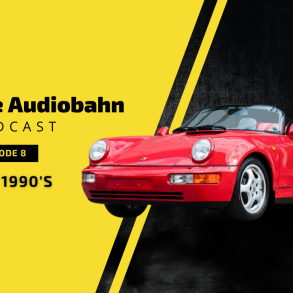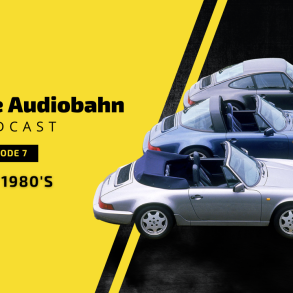1950 – 1954 Porsche 356/1100 “Pre-A” – The Ultimate Guide
Introduced in 1948, the Porsche 356 Pre-A Coupe was the first variant available for the Porsche 356. By 1950, production of the coupe was handled by coachbuilder Reutter. The engine started as a 1100 cc flat four that produced 40 hp (the model covered here). The Porsche 356 Pre A Cabriolet bodystyle was also introduced in 1950 and was available through mid-1955. Engine selection mirrored what was available on the Pre-A Coupe.
The aluminum bodied cars that were hand produced in Gmund were known as 356/2 Gmund. By 1950 Porsche had moved production of the bodies to coachbuilder Reutter and was in full production of the 356. That “formal” first generation of the Porsche 356 is referred to as the Porsche 356 pre-A and was produced from 1950 through 1955.
Available as both a coupe and a cabriolet, the engine started as an 1100 cc flat-four and shared a lot in common with the Volkswagen Beetle engine. In 1951, 1300 cc and 1500 cc engines with considerably more power were introduced. In 1953, the 1300 S or “Super” was introduced, and the 1100 cc engine was dropped. In 1954, the Speedster was introduced as a stripped down roadster. In 1955, the final year of the 356 Pre A, saw the introduction of the race inspired 1500 cc, 110 hp, four-cam motor for the 356 Pre-A Carrera. The subsequent generation of the 356 followed in late 1955 and is known as the Porsche 356 A.
This learning period for Porsche’s first production model, the 356, became known as the Pre-A. During the Pre-A years, the 356 would see the replacement of the two-piece windshield with a V-shaped windshield and a much improved synchromesh transmission. Power was also upgraded with the expansion of the 1100cc and 1300cc engines to the 1500cc power plant, boosting power to 60 bhp. Importation of the new cars, by the now famous Max Hoffman, began in earnest in 1954 making the Pre-A examples exceedingly rare in the United States.
The engine was the Type 369, a 1.1-litre motor with a lightweight alloy crankcase, domed pistons and enlarged valves. With a compression ratio of 7.0:1 and new Solex 32 PBI carburettors, the Type 369 engine produced 40 bhp at 4200rpm and 52 ft lbs at 3300rpm.
Porsche 356 ‘Split-Window’ Coupe (1950-1951)
Using license fees from VW, accrued rent from their war-time occupied buildings and upfront dealer money, Porsche were able to move production from Austria back to their hometown of Stuttgart and produce the first German 356, a ‘Split-Window’ Coupé.
Finished in the spring of 1950, the first Coupé marked the 50th anniversary of Porsche transport which began with the Lohner-Porsche of 1900. This was celebrated at the Paris Salon de l’Automobile where the diminutive Coupé was displayed by its lonesome.1
Not long after the show, Porsche output exceeded 30 cars a month with both Coupé and Cabriolet bodies. Both were loosely based off their equivalents made in Gmünd, Austria but had bodied made in steel instead of aluminum.
The engine was the same VW 1086cc that employed a Porsche cylinder head, the same design that was used on the last few Gmünd cars. Bodies were all sourced from Reutter except some cabriolets which were sent to Glässer when demand was great than Reutter could handle. By November of 1950 80 cars were being made per month.
At the Frankfurt motor show in 1951 a suite of upgrades was announced including Lockheed discs and a 1.3-liter engine. This used larger bore, finned aluminum cylinders with chromed cylinders from Mahle. The engine had lower compression for pump fuel and could still produce 4 additional bhp.
All the cars and most of the 356 production was eventually sold to Max Hoffman who was the sole importer for America. After racing three aluminum-bodied Gmünd Coupés at the 1951 24 Hours of Le Mans the 356 appeal grew.
Before the 1952 year, Porsche and Reutter improved the car with a one-piece bend windshield, Not too long afterward in mid-1952 the bumpers were repositioned at the request of Max Hoffman. By the end of the year the seminal 1500 engine was released with Hirth-sourced crankshafts and connecting rods which became known for their rolling bearing big-ends.
Porsche 356 1100 “Pre-A” ‘Split-Window’ Cabriolet (1950-1951)
After producing the first German 356, a ‘Split-Window’ Coupé, Porsche produced a Cabriolet shortly there after which was built by Karrosseriewerk Reutter. Initial production output exceeded 30 cars a month with both Coupé and Cabriolet bodies. Both were loosely based off their equivalents made in Gmünd, Austria but had bodied made in steel instead of aluminum.
The engine was the same VW 1086cc that employed a Porsche cylinder head, the same design that was used on the last few Gmünd cars. Bodies were all sourced from Reutter except some cabriolets which were sent to Glässer when demand was great than Reutter could handle. By November of 1950 80 cars were being made per month.
At the Frankfurt motor show in 1951 a suite of upgrades was announced including Lockheed discs and a 1.3-liter engine. This used larger bore, finned aluminum cylinders with chromed cylinders from Mahle. The engine had lower compression for pump fuel and could still produce 4 additional bhp.
Most of the 356 production was eventually sold to Max Hoffman who was the sole importer for America and had a dealership on Park Avenue in New York City. After racing three aluminum-bodied Gmünd Coupés at the 1951 24 Hours of Le Mans the 356 appeal grew.
Before the 1952 year, Porsche and Reutter improved the car with a one-piece bent windshield, Not too long afterward in mid-1952 the bumpers were repositioned at the request of Max Hoffman. By the end of the year the seminal 1500 engine was released with Hirth-sourced crankshafts and connecting rods which became known for their rolling bearing big-ends.
Porsche 356 1100 “Pre-A” ‘Curved-Window’ Coupe & Cabriolet (1952-1954)
Technical changes came thick and fast throughout 1952. In April 1952, Porsche switched to a single-piece windscreen which required the front wings to be slightly lengthened. Brightwork was added to the front and rear windscreens in the form of a slim aluminium moulding.
Inside, a host of changes were made. Green on black instruments replaced the original white on black type, the beech door caps were switched to body colour, a passenger sun visor was added and a conventional indicator stalk was fitted in place of a switch on the dash.
Fibreboard was used instead of steel for the glovebox. All cars were fitted with fully reclining seats that featured large chrome-plated hinges screwed to the sides of the backrests. To increase luggage space, the rear seats could be lowered flat.
At the same time, wider 3.25-inch wheels were fitted (up from 3-inches). They were not only ventilated to assist brake cooling but also lighter than before. Louvred hub caps were a new, expensive and rarely specified option. Additionally, the throttle cable was exchanged for a metal rod linkage while the fuel tank was widened and secured with metal straps instead of bolts.


